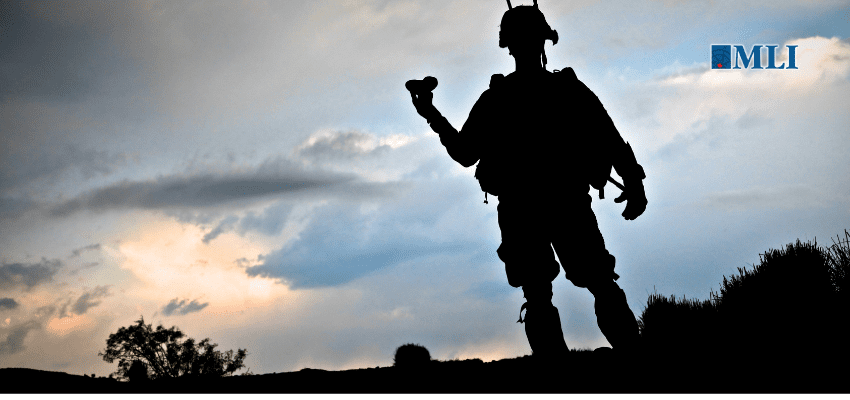By Alan Kessel, June 26, 2025
The Middle East has entered a precarious calm. On June 24, a ceasefire brokered by United States President Donald Trump brought a sudden halt to a week of escalating hostilities between the U.S., Israel, and the Islamic Republic of Iran. The missiles have stopped — for now — but the implications of what unfolded are still reverberating across the region, and far beyond it.
This was not just a military flare-up. It was a decisive geopolitical moment that revealed a strategic realignment — and the unmistakable reassertion of American power.
For Iran’s regime, the confrontation exposed its growing vulnerability. For the United States, it marked the end of ambiguity. And for the world, it was the clearest evidence in years that America is not withdrawing from the world — it is re-engaging with purpose.
This was not merely an Israeli campaign. It was a moment of joint resolve between Washington and Jerusalem. For the first time, the United States gave explicit operational backing to Israel to strike deep into Iran’s strategic core. The long-standing policy of restraint — a combination of caution and geopolitical fatigue — was abruptly discarded.
Israel took the operational lead in the opening days of the campaign, targeting Iran’s military infrastructure and command-and-control systems with surgical precision. These strikes laid the groundwork for what followed. Once Iranian air defences and key communication nodes were degraded, U.S. B-2 stealth bombers entered the theatre and delivered the coup de grâce: coordinated precision strikes on Iran’s three most sensitive nuclear enrichment sites: Fordo, Natanz, and Isfahan. These were not symbolic targets. They were the beating heart of Iran’s atomic ambitions.
The damage was most acute at Fordo — the most important of the three sites, and once thought untouchable — where early satellite imagery analysis suggests that extensive subterranean infrastructure may have been compromised. The message was unmistakable: the West not only knows where Iran’s weapons infrastructure lies, it now has the political will and operational reach to neutralize it.
Trump, who had long vowed that Iran would never be allowed to develop nuclear weapons, followed the strikes with a televised address from the White House. The message was stark: Iran must choose peace or risk further devastation. Three days later, under intense pressure, Tehran accepted a ceasefire. Whether that choice holds is uncertain — but the balance of risk has now shifted.
The United States did not just confront Iran’s proxies. It confronted the regime directly. That marked a Rubicon moment.
For the Islamic Republic, the week of strikes marked its most dangerous crisis since the revolution of 1979. Already crippled by sanctions, riven by internal dissent, and diplomatically cornered, it now saw its nuclear and missile infrastructure laid bare. Iran’s deterrence posture — based on ambiguity, asymmetry, and impunity — cracked under the weight of co-ordinated force.
Its proxies, long used to shaping regional dynamics, were caught off guard. Hezbollah, the Houthis, and militias in Iraq offered little but bluster in response. Iran, for once, had no escalation ladder to climb.
But the collapse of deterrence does not mean the arrival of stability. A weakened regime is not a safer one. Iran is a deeply divided, multi-ethnic state with overlapping centres of power. The Islamic Revolutionary Guard Corps (IRGC) is not just a military arm — it is a shadow state with its own economic empire. Regime fracture could spark internal chaos, regional spillover, or the uncontrolled spread of nuclear and cyber capabilities.
That said, the West must not confuse military success with strategic resolution. The most dangerous phase may lie ahead.
For Israel, this is a moment of historic vindication. After decades of warnings — often ignored — about Iran’s nuclear intentions, it now acts with the overt backing of the United States. What could have been a lonely pre-emptive campaign became a joint operation. For the first time in years, Israel is not reacting to threats. Its adversaries are reacting to it.
And for the United States, this was more than a regional intervention. It was a statement of renewed global posture. After years of perceived withdrawal — from Kabul, from multilateralism, from leadership — the world had begun to assume that American power was in retreat. That assumption has now been shattered.
We may not all agree with Trump’s approach to international trade — where confrontation has often taken precedence over consensus. But in the realm of hard power, there is no denying that he arrived at this week’s NATO Summit in The Hague with a significant win under his belt — and, however grudging, a new measure of respect from U.S. allies. He has demonstrated that Washington is not paralyzed by hesitation, and that American leadership — when exercised — can still shape the course of international events.
Russia, China, North Korea, and Iran are all taking notice. They may not like it. But they no longer doubt it. The United States has demonstrated that red lines still exist, and that it will act when they are crossed.
The war may be on pause, but the message is clear: the age of American ambivalence is over.
Alan Kessel is a former legal adviser to the Government of Canada and deputy high commissioner to the United Kingdom. He is currently a senior fellow at the Macdonald-Laurier Institute.






